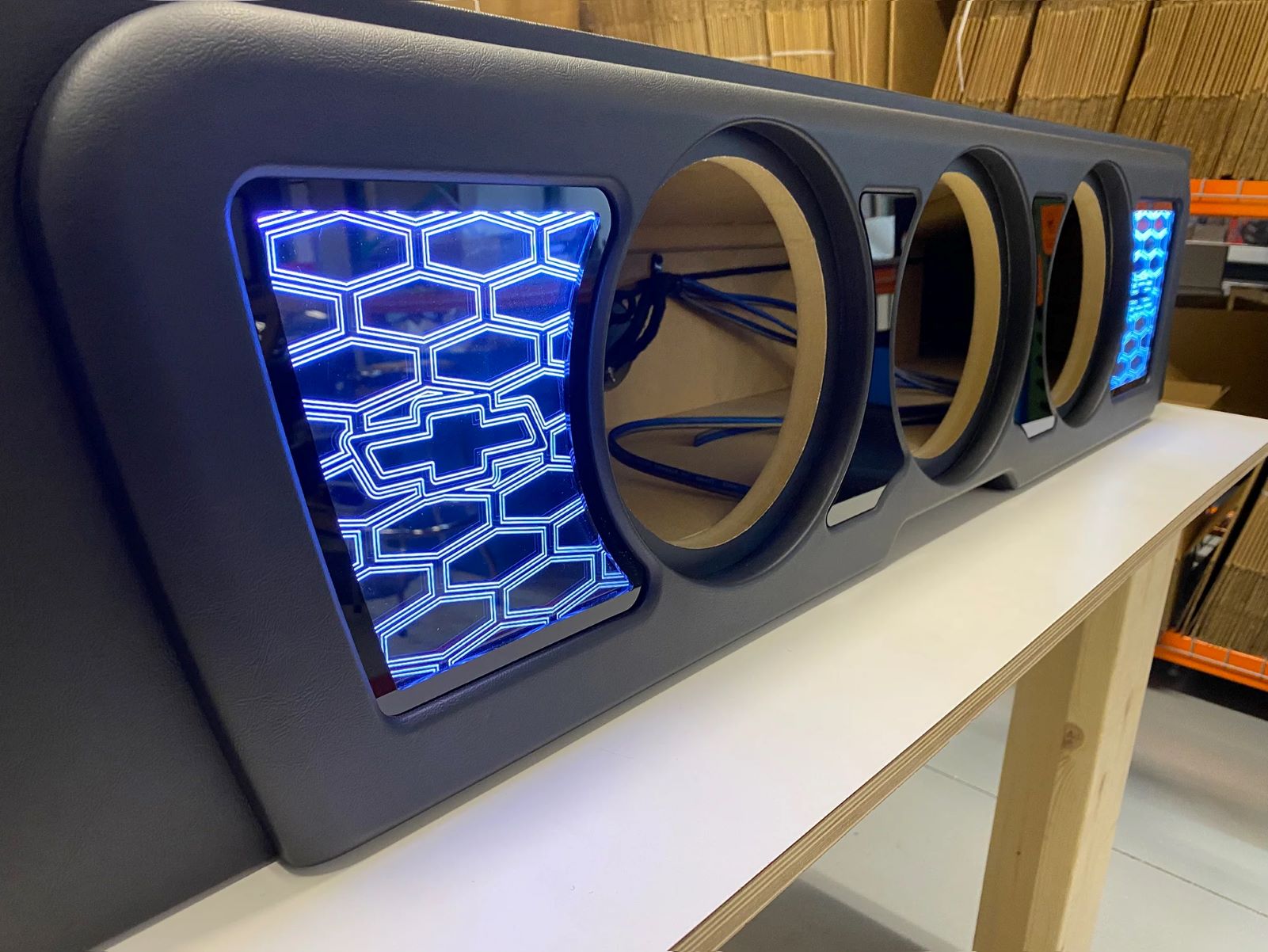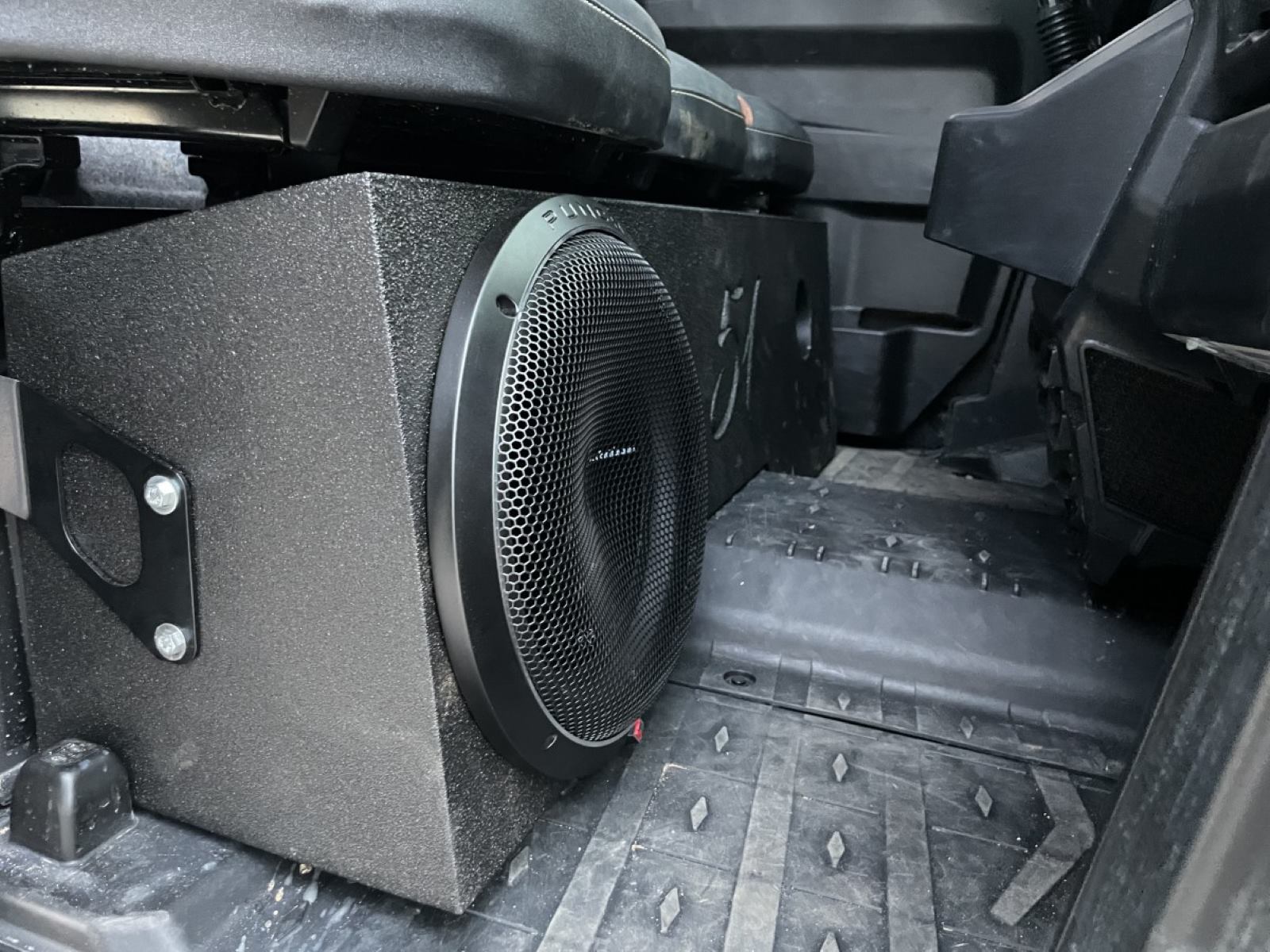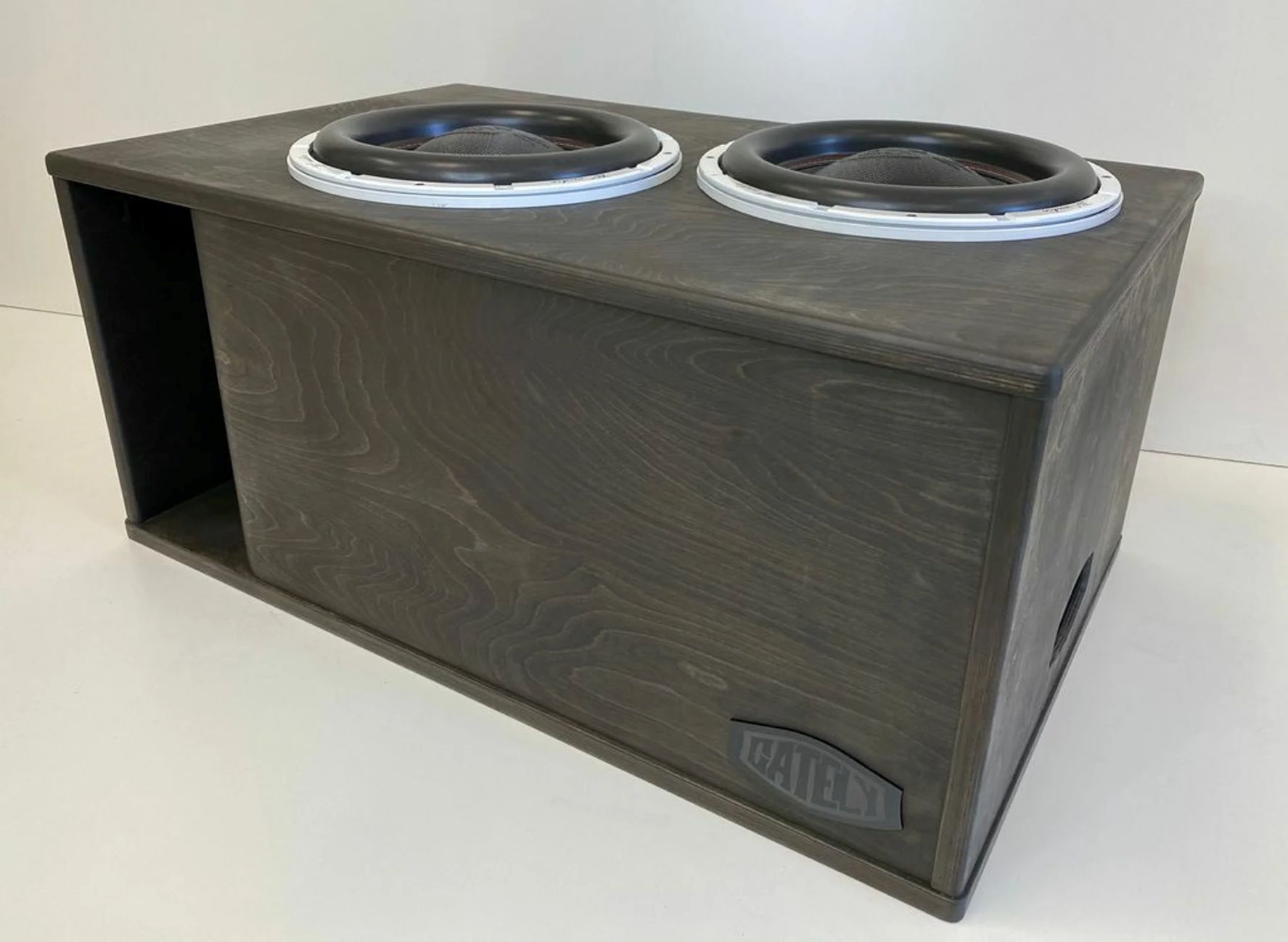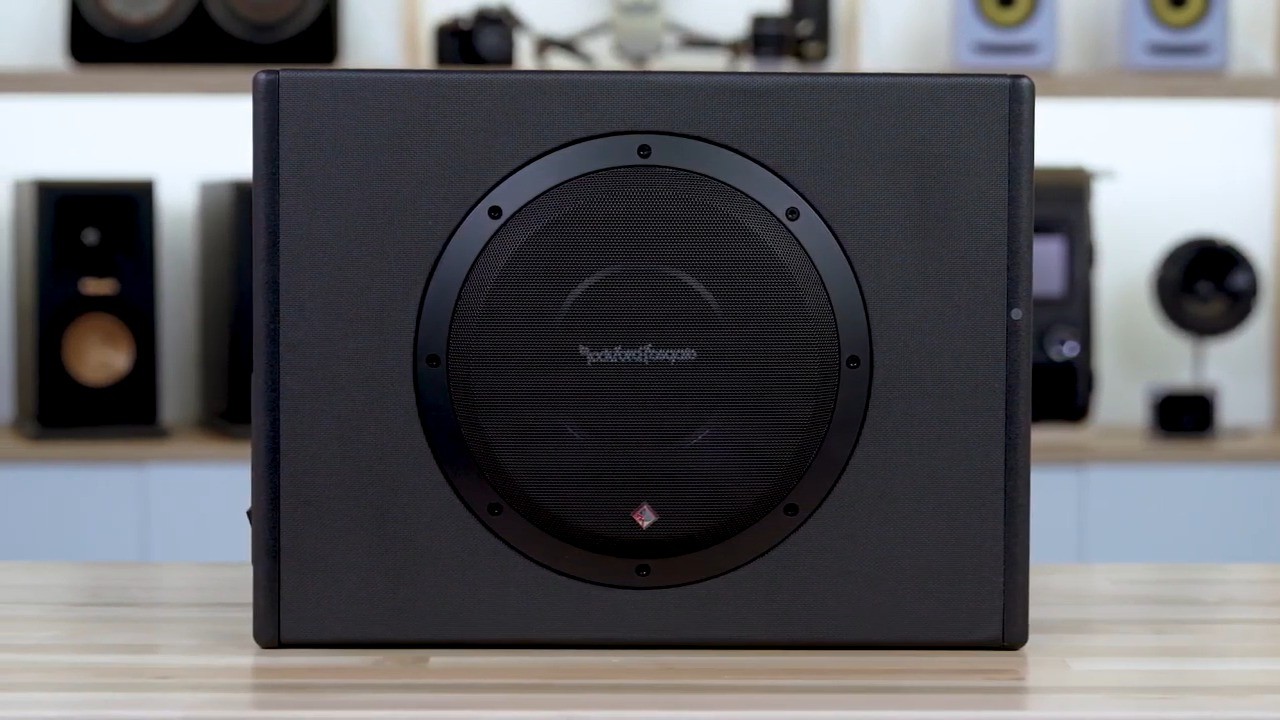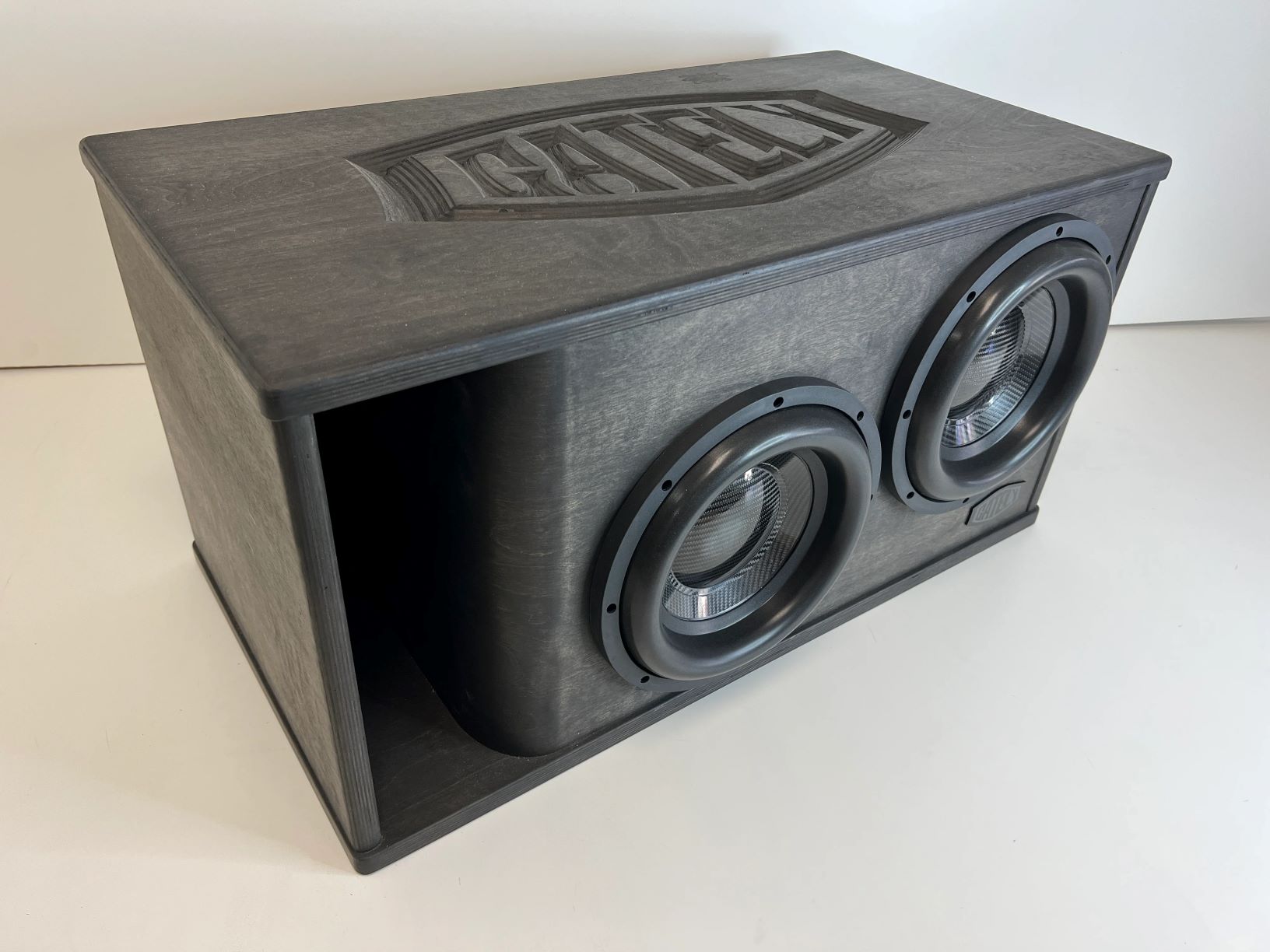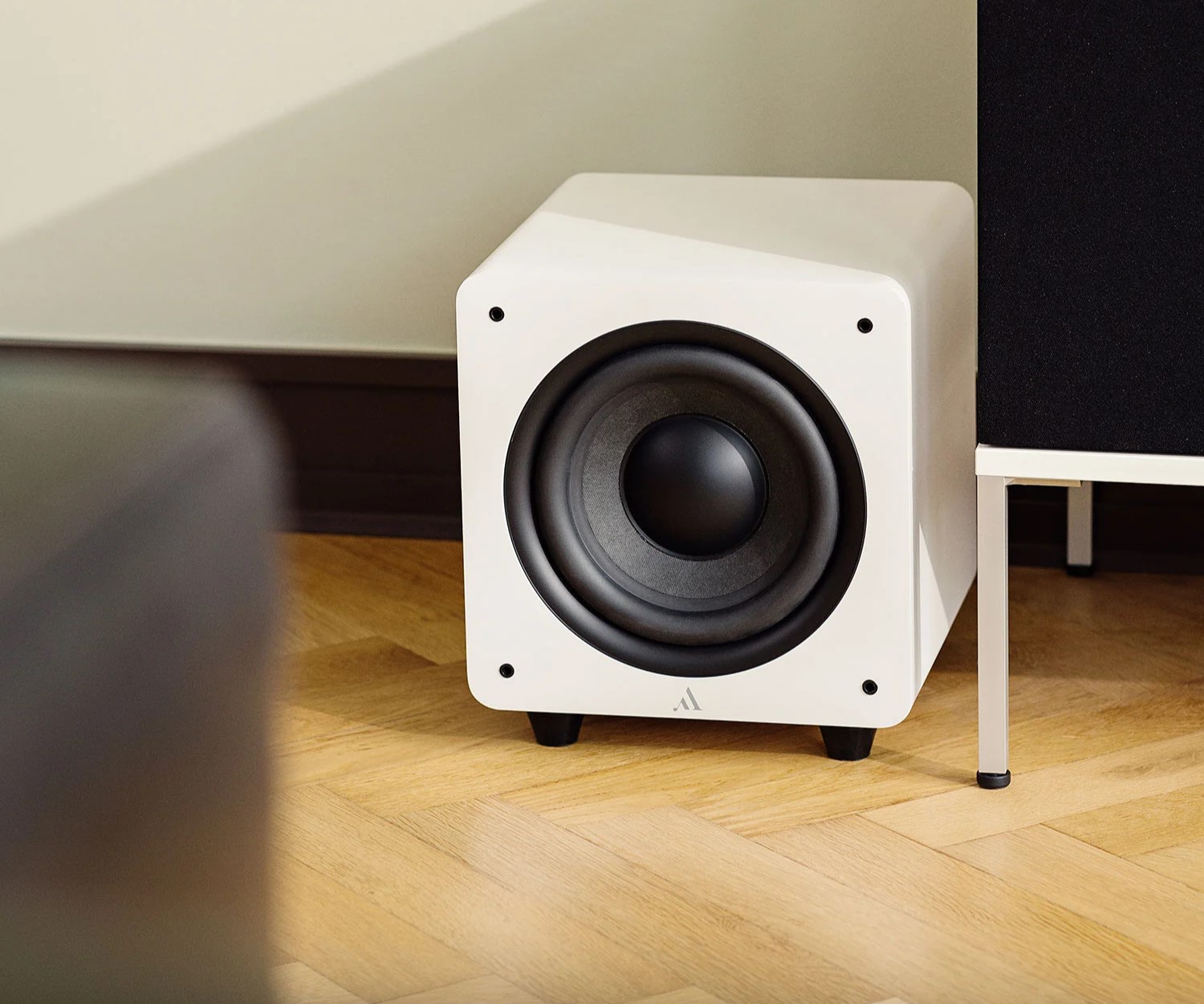Home>Devices & Equipment>Subwoofer>What Is A Bandpass Subwoofer Box
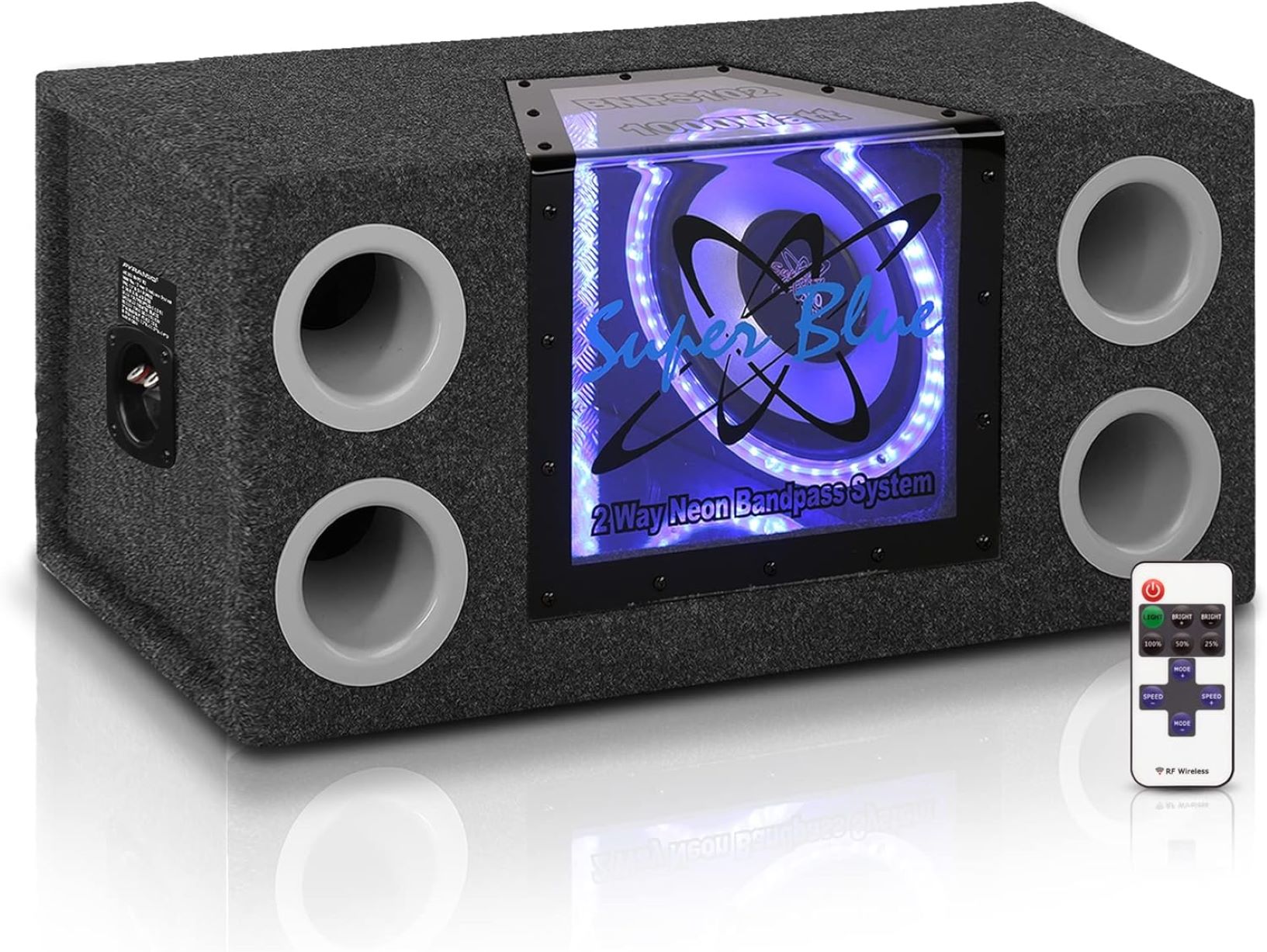

Subwoofer
What Is A Bandpass Subwoofer Box
Modified: February 18, 2024
Learn about the benefits and construction of a bandpass subwoofer box. Enhance your audio experience with this essential component for powerful bass.
(Many of the links in this article redirect to a specific reviewed product. Your purchase of these products through affiliate links helps to generate commission for AudioLover.com, at no extra cost. Learn more)
Table of Contents
Introduction
Welcome to the world of subwoofers, where deep bass frequencies reign supreme. When it comes to achieving impactful and booming bass in your car audio system or home theater setup, one of the key elements to consider is the type of subwoofer enclosure you use. Among the various options available, the bandpass subwoofer box stands out as a popular choice for enthusiasts seeking thunderous low-end performance.
A bandpass subwoofer box is a unique type of enclosure that is specifically designed to maximize the output of low-frequency sound waves. It combines elements of both sealed and ported enclosures to deliver powerful, tight bass that can shake the very foundation of your audio experience.
In this article, we will explore the world of bandpass subwoofer boxes, examining their components, functionality, advantages, and disadvantages. Whether you are a car audio enthusiast or a home theater aficionado, understanding the benefits and limitations of a bandpass subwoofer box will help you make an informed decision when choosing the right enclosure for your setup.
Definition of a Bandpass Subwoofer Box
A bandpass subwoofer box is a specialized type of subwoofer enclosure that is designed to emphasize specific frequencies and improve overall bass performance. It is characterized by its unique construction, which incorporates both a sealed chamber and a ported chamber, creating a two-stage system for reproducing low-frequency sound.
Unlike other types of subwoofer enclosures, such as sealed or ported, a bandpass subwoofer box utilizes the acoustic properties of the enclosed chambers to produce a specific sound response. The design of a bandpass box allows it to efficiently amplify and resonate specific low frequencies, resulting in a louder and more pronounced bass output compared to other enclosure types.
A bandpass subwoofer box typically consists of two chambers: the sealed chamber and the ported chamber. The sealed chamber acts as a dampening enclosure for the subwoofer, providing control and accuracy in reproducing tight and precise bass. It helps to prevent excessive excursion of the subwoofer cone, resulting in cleaner and more controlled bass response.
The ported chamber, on the other hand, is responsible for enhancing the overall output and efficiency of the low-frequency sound. It features a tuned port or vent that allows the air to escape in a controlled manner, boosting the low-end response and creating a more boomy and resonant bass output.
The combination of the sealed and ported chambers in a bandpass subwoofer box creates a resonance effect that emphasizes specific frequencies, often resulting in a peak in the frequency response curve at the desired bass frequencies. This unique design allows a bandpass subwoofer box to produce a loud and impactful bass that can be felt and heard with great intensity.
Bandpass subwoofer boxes come in different designs and configurations, ranging from single-chamber bandpass enclosures to dual-chamber bandpass enclosures. The choice of design depends on the desired sound characteristics and the specific requirements of the audio system.
Now that we have a clear understanding of what a bandpass subwoofer box is and how it is constructed, let’s delve deeper into its components and how it works to deliver powerful bass performance.
Components of a Bandpass Subwoofer Box
A bandpass subwoofer box is composed of several key components that work together to produce its unique sound characteristics. Understanding these components will give you a better insight into how a bandpass subwoofer box functions and why it is capable of delivering powerful bass performance.
1. Sealed Chamber: The sealed chamber is an airtight enclosure that houses the subwoofer driver. Its primary function is to provide a controlled environment for the subwoofer, preventing air leakage and ensuring accurate and tight bass reproduction. The size and shape of the sealed chamber affect the resonant frequency and overall response of the subwoofer.
2. Ported Chamber: The ported chamber, also known as the vented chamber, is connected to the sealed chamber and features a port or opening to allow air to escape. The ported chamber enhances the low-frequency output of the subwoofer by utilizing the resonance effect. The size, length, and shape of the port determine the tuning frequency and the efficiency of the bass response.
3. Subwoofer Driver: The subwoofer driver is the heart of the system and is responsible for converting electrical signals into sound waves. It consists of a cone or diaphragm, a voice coil, and a magnet assembly. The driver’s size, power handling capabilities, and frequency response play a crucial role in the performance of the bandpass subwoofer box.
4. Divider: The divider separates the sealed chamber from the ported chamber in a dual-chamber bandpass subwoofer box. It ensures that the air and sound waves produced by the subwoofer are directed correctly to their respective chambers, preventing interference and optimizing the overall sound output.
5. Bracing: Bracing refers to the internal support structures within the bandpass subwoofer box. Its purpose is to reinforce the enclosure and minimize resonances and vibrations that can negatively impact the sound quality. Bracing typically consists of additional panels or supports strategically placed inside the box.
6. Input/Output Connectors: The input and output connectors allow for the connection of the subwoofer to the audio amplifier or receiver. These connectors can be in the form of binding posts, banana jacks, or spring clips, making it easy to integrate the bandpass subwoofer box into your audio setup.
Each component of a bandpass subwoofer box plays a vital role in shaping the sound output. The combination of the sealed chamber, ported chamber, subwoofer driver, divider, bracing, and connectors work harmoniously to produce the distinctive and powerful bass that bandpass subwoofer boxes are known for.
How Bandpass Subwoofer Boxes Work
Bandpass subwoofer boxes utilize a unique design to achieve their powerful and impactful bass performance. Understanding how they work will give you a deeper appreciation of their capabilities and help you optimize their performance in your audio system.
The operation of a bandpass subwoofer box can be broken down into three main stages:
- Enclosure Sealing: The sealed chamber of the bandpass subwoofer box creates an airtight environment around the subwoofer driver. This sealing prevents air leakage and allows the subwoofer to move air more efficiently, resulting in accurate and tight bass reproduction. The size and shape of the sealed chamber, along with the characteristics of the subwoofer driver, determine the resonant frequency and overall response of the system.
- Sound Wave Routing: Once the subwoofer driver creates sound waves, the divider inside the bandpass subwoofer box directs these waves towards the ported chamber. The divider ensures that the sound waves generated by the subwoofer driver are efficiently routed to the port, minimizing interference and optimizing the overall sound output.
- Ported Chamber Resonance: The ported chamber of the bandpass subwoofer box plays a crucial role in enhancing the low-frequency output. The port or vent in the chamber allows air to escape in a controlled manner, creating a resonance effect. This resonance amplifies the specific low frequencies that the box is tuned for, resulting in a pronounced and boomy bass response. The size, length, and shape of the port are carefully calculated to achieve the desired tuning frequency and optimize the efficiency of the bass output.
By combining the sealed chamber and the ported chamber, bandpass subwoofer boxes exploit the benefits of both sealed and ported enclosures. The sealed chamber provides control and accuracy in reproduction, while the ported chamber enhances the overall loudness and resonance of the low-frequency sound.
The specific design and tuning of a bandpass subwoofer box can vary depending on the desired sound characteristics and the specific subwoofer driver being used. The dimensions of the sealed chamber, the design of the port, and the placement of the subwoofer driver all contribute to the unique sound signature of the enclosure.
It is important to note that bandpass subwoofer boxes are designed to emphasize specific frequencies, often resulting in a peak in the frequency response curve at the desired bass frequencies. This tuning is achieved by carefully selecting the dimensions and characteristics of the enclosure components, ensuring that the box resonates at the desired frequencies.
Overall, bandpass subwoofer boxes offer a powerful and efficient way to reproduce deep bass frequencies. Their unique design and careful tuning allow them to produce a booming, resonant, and impactful bass that can transform your audio experience.
Advantages of Using a Bandpass Subwoofer Box
Bandpass subwoofer boxes offer several advantages that make them a popular choice among audio enthusiasts looking to achieve intense and immersive bass performance. Understanding these advantages will help you determine if a bandpass subwoofer box is the right choice for your audio system.
1. Increased Efficiency: One of the key advantages of a bandpass subwoofer box is its increased efficiency in reproducing low-frequency sound. The combination of the sealed chamber and ported chamber allows the box to optimize the energy transfer and output of the subwoofer driver. As a result, a bandpass subwoofer box can produce higher sound pressure levels with less power compared to other enclosure types.
2. Enhanced Bass Output: Bandpass subwoofer boxes are specifically designed to emphasize specific frequencies, resulting in a more pronounced and impactful bass response. The resonance effect created by the ported chamber enhances the low-frequency output, providing a boomy and resonant bass that can be felt and heard with great intensity.
3. Compact Design: Bandpass subwoofer boxes are often more compact compared to other enclosure types, such as ported boxes. The sealed chamber and ported chamber are housed within a single enclosure, allowing for efficient use of space. This makes bandpass subwoofer boxes a suitable choice for applications where space is limited, such as in vehicles.
4. Directional Bass: The design of a bandpass subwoofer box ensures that the majority of the bass energy is projected in a specific direction. This directional bass output results in a more focused and controlled bass response, minimizing unwanted vibrations and resonances in the surrounding environment.
5. Unique Sound Signature: Bandpass subwoofer boxes have their own distinctive sound signature. The combination of the sealed chamber and ported chamber results in a tight and controlled bass response, while also providing the characteristic boom and resonance associated with bandpass enclosures. This unique sound signature can add depth and impact to your audio system.
6. Customizable Sound: Bandpass subwoofer boxes allow for fine-tuning and customization of the sound output. By adjusting the dimensions and characteristics of the sealed chamber and ported chamber, along with the choice of subwoofer driver, you can tailor the box to achieve the desired bass response and sound characteristics that suit your preferences.
It is important to note that while bandpass subwoofer boxes offer several advantages, they may not be suitable for every audio setup. Factors such as the size of the enclosure, tuning frequency, and the specific subwoofer driver being used should be considered when determining if a bandpass subwoofer box is the right choice for your needs.
Overall, the increased efficiency, enhanced bass output, compact design, directional bass, unique sound signature, and customizable sound make bandpass subwoofer boxes an attractive option for those seeking powerful and immersive bass performance.
Disadvantages of Using a Bandpass Subwoofer Box
While bandpass subwoofer boxes offer a range of benefits, they are not without their drawbacks. It is important to consider these disadvantages before deciding if a bandpass subwoofer box is the right choice for your audio system.
1. Narrow Frequency Range: Bandpass subwoofer boxes are specifically designed to emphasize specific frequencies, often resulting in a narrow frequency range where the bass is most pronounced. This can limit the overall versatility of the enclosure, as it may not accurately reproduce frequencies outside of its tuned range.
2. Less Control Over Sound: The unique design of a bandpass subwoofer box may offer less control over the sound compared to other enclosure types. While it provides a boomy and impactful bass response, it may lack the tightness and accuracy of a sealed box when it comes to reproducing fast, intricate bass lines or subtle nuances in the music.
3. Complex Design: The construction of a bandpass subwoofer box is more complex compared to other enclosure types. It requires careful tuning of the sealed chamber, the ported chamber, and the subwoofer driver to achieve optimum performance. This complexity can make the design and building process more challenging for DIY enthusiasts or those without experience in enclosure design.
4. Limited Placement Options: Due to their specific design and directional bass output, bandpass subwoofer boxes may have limited placement options. They are often optimized for a specific position in the audio system, such as placed against a wall or in a corner. This limitation can be a drawback for those with space constraints or a desire for more flexibility in subwoofer placement.
5. Inefficient Power Handling: While bandpass subwoofer boxes can be efficient in terms of producing high sound pressure levels with less power, they can be less efficient in terms of power handling. The unique design and resonance effect of the enclosure can sometimes result in increased power demands, potentially requiring a more powerful amplifier to achieve optimal performance.
6. Specific Sound Preference: The unique sound signature of a bandpass subwoofer box may not appeal to everyone. Some listeners may prefer a more balanced and neutral bass response, while others may find the pronounced boom and resonance of a bandpass subwoofer box overpowering or fatiguing over extended listening sessions.
It is important to weigh these disadvantages against the advantages of bandpass subwoofer boxes to determine if they align with your audio preferences and requirements. Considering factors such as the desired sound characteristics, placement options, and power handling capabilities will help you determine if a bandpass subwoofer box is a suitable choice for your audio system.
Factors to Consider When Choosing a Bandpass Subwoofer Box
When selecting a bandpass subwoofer box for your audio system, several factors should be taken into consideration to ensure optimal performance and a satisfying listening experience. These factors will help you make an informed decision when choosing the right bandpass subwoofer box for your specific needs and preferences.
1. Tuning Frequency: The tuning frequency of a bandpass subwoofer box determines the range of frequencies it emphasizes. Consider the type of music you primarily listen to and choose a tuning frequency that complements the genre. Lower tuning frequencies tend to provide a deeper and more extended bass response, while higher tuning frequencies may result in a tighter and punchier bass.
2. Subwoofer Driver Compatibility: Ensure that the bandpass subwoofer box is compatible with your chosen subwoofer driver or drivers. Check the recommended specifications provided by the subwoofer manufacturer, such as the required airspace, power handling capabilities, and mounting requirements. Compatibility is crucial for optimum performance and to prevent any damage to the subwoofer.
3. Size and Portability: Consider the size and portability of the bandpass subwoofer box, especially if you plan to use it in a vehicle or have limited space available. Ensure that the dimensions of the box are appropriate for your vehicle’s trunk or the designated space in your home theater setup. Portable or compact bandpass subwoofer boxes provide flexibility and ease of installation.
4. Build Quality and Durability: Assess the build quality and durability of the bandpass subwoofer box. Look for robust construction and materials that can withstand the vibrations and stresses of high-volume, low-frequency reproduction. Quality craftsmanship and durable materials will prolong the lifespan of the enclosure and ensure reliable performance over time.
5. Power Handling Requirements: Consider the power requirements of the bandpass subwoofer box and ensure that your amplifier can adequately supply the necessary power. Pay attention to the recommended power range and impedance compatibility specified by the subwoofer driver manufacturer. Matching the power handling capabilities of the box with the amplifier will prevent underpowering or overpowering the subwoofer, which can result in distorted sound or damage to the equipment.
6. Listening Environment: Take into account the characteristics of your listening environment. Assess factors such as the room size and acoustics to determine if a bandpass subwoofer box is suitable. In some cases, the resonant nature of a bandpass box may accentuate room modes and result in boomy or muddy bass. If possible, audition the box in your listening environment or seek expert advice to ensure compatibility.
7. Budget: Determine your budget for the bandpass subwoofer box and consider the price range that fits your financial constraints. It is important to strike a balance between budget limitations and the desired performance and quality. Remember that a higher price does not always guarantee better performance, so consider value for money when making your decision.
By considering these factors, you can narrow down your choices and find a bandpass subwoofer box that meets your specific requirements and delivers the desired bass performance in your audio system.
Conclusion
Bandpass subwoofer boxes are a popular choice for audio enthusiasts seeking powerful and impactful bass performance. With their unique design and careful tuning, these enclosures offer advantages such as increased efficiency, enhanced bass output, and a compact footprint. However, it is important to consider the disadvantages, including a narrow frequency range and limited placement options, before choosing a bandpass subwoofer box for your audio system.
When selecting a bandpass subwoofer box, it is crucial to consider factors such as the tuning frequency, compatibility with subwoofer drivers, size and portability, build quality and durability, power handling requirements, the listening environment, and your budget. By weighing these factors and finding the right balance, you can choose a bandpass subwoofer box that delivers the desired bass response and meets your specific needs and preferences.
Whether you’re looking to upgrade your car audio system or enhance your home theater setup, a bandpass subwoofer box can add depth and impact to your audio experience. Its unique sound signature, customization options, and ability to produce intense and immersive bass make it a compelling choice for those seeking thunderous low-end performance.
Remember to carefully evaluate your requirements, research different models, and, if possible, audition the bandpass subwoofer boxes before making a final decision. Choosing the right bandpass subwoofer box will ensure that your audio system delivers the deep, powerful bass that transports you into a whole new level of sonic bliss.

